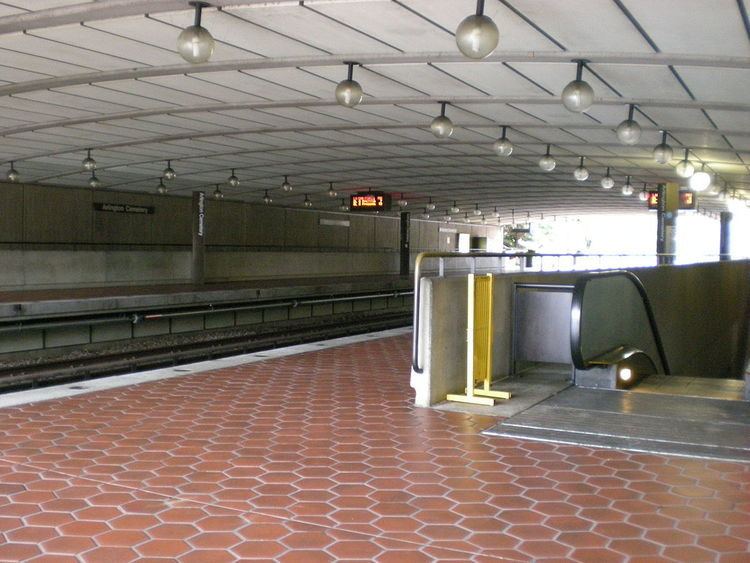Owned by WMATA Connections Metrobus: 7Y Disabled access Yes Connection Metrobus Tracks 2 | Structure type Open-cut Opened 1 July 1977 Platforms in use 2 | |
 | ||
Location 1000 North Memorial DriveArlington, VA 22211 Similar Benning Road station, Pentagon City station, Potomac Avenue station, Federal Center SW station, Stadium–Armory station | ||
Washington metrorail hd 60 fps blue line trains arlington cemetery station 8 18 15
Arlington Cemetery is a side platformed Washington Metro station in Arlington, Virginia, United States. The station was opened on July 1, 1977, and is operated by the Washington Metropolitan Area Transit Authority (WMATA). The station provides service for only the Blue Line, and is located at the entrance to Arlington National Cemetery, underneath Memorial Drive. There is no public parking near the station except at the cemetery, which is reserved for cemetery visitors. It is the only station that closes earlier than the rest of the system, closing at 7 PM from October to March, and 10 PM from April to September. The station is also unique in its design. It is just below ground level, and is only covered by a bridge carrying Memorial Drive. The station is the only station in the system to be exclusively serviced by the Blue Line, as the rest of the Blue Line's stations are shared with the Yellow Line south of here and with the Silver Line and Orange Line north of here.
Contents
- Washington metrorail hd 60 fps blue line trains arlington cemetery station 8 18 15
- Station layout
- Notable places nearby
- References
The station opened on July 1, 1977. Its opening coincided with the completion of 11.8 miles (19.0 km) of rail between National Airport and RFK Stadium and the opening of the Capitol South, Crystal City, Eastern Market, Farragut West, Federal Center SW, Federal Triangle, Foggy Bottom–GWU, L'Enfant Plaza, McPherson Square, National Airport, Pentagon, Pentagon City, Potomac Avenue, Rosslyn, Smithsonian, and Stadium–Armory stations.
Station layout
Escalators from Memorial Drive go down two levels to the mezzanine, where customers may purchase tickets at vending machines and pass through the faregates. Escalators on the other side of the faregates then go up to the platforms. Elevators go directly to the platforms with one two-way faregate for each elevator at platform level.
